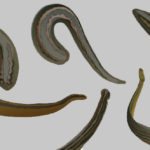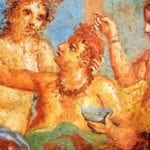 Weird Stuff
Weird Stuff  Weird Stuff
Weird Stuff  Politics
Politics 10 Political Scandals That Sent Crowds Into the Streets
 Weird Stuff
Weird Stuff Ten Bizarre Facts About The Doge Meme
 Our World
Our World 10 Ways Your Christmas Tree Is More Lit Than You Think
 Movies and TV
Movies and TV The 10 Coolest Stars to Set Sail on The Love Boat
 History
History 10 Things You Didn’t Know About the American National Anthem
 Technology
Technology Top 10 Everyday Tech Buzzwords That Hide a Darker Past
 Humans
Humans 10 Everyday Human Behaviors That Are Actually Survival Instincts
 Animals
Animals 10 Animals That Humiliated and Harmed Historical Leaders
 History
History 10 Most Influential Protests in Modern History
 Weird Stuff
Weird Stuff 10 Funny Ways That Researchers Overthink Christmas
 Politics
Politics 10 Political Scandals That Sent Crowds Into the Streets
 Weird Stuff
Weird Stuff Ten Bizarre Facts About The Doge Meme
Who's Behind Listverse?

Jamie Frater
Head Editor
Jamie founded Listverse due to an insatiable desire to share fascinating, obscure, and bizarre facts. He has been a guest speaker on numerous national radio and television stations and is a five time published author.
More About Us Our World
Our World 10 Ways Your Christmas Tree Is More Lit Than You Think
 Movies and TV
Movies and TV The 10 Coolest Stars to Set Sail on The Love Boat
 History
History 10 Things You Didn’t Know About the American National Anthem
 Technology
Technology Top 10 Everyday Tech Buzzwords That Hide a Darker Past
 Humans
Humans 10 Everyday Human Behaviors That Are Actually Survival Instincts
 Animals
Animals 10 Animals That Humiliated and Harmed Historical Leaders
 History
History 10 Most Influential Protests in Modern History
Top 10 Bizarre Ancient Roman Medical Treatments
The ancient Romans were responsible for a number of scientific advancements that greatly benefited humankind. However, some of their solutions didn’t work. Here are 10 diseases and the erroneous cures that the ancient Romans devised.
Warning: These Roman treatments don’t work, so don’t try them.
10 Acne

Acne was probably the scourge of nearly every Roman teenager, so the Romans tried to come up with a cure. Crocodile meat was effective at getting rid of spots, even freckles, when combined with cyprus oil.
If the pimples persisted, the Romans suggested taking a bath with oil and sour cheese to remove the pimples. Leek leaves could get rid of pimples when rubbed on the skin. Lastly, the juice of myrrh, when mixed with cassia and honey, was said to be effective at relieving what the Romans referred to as varus.
If all of that failed to rid one’s face of acne, the court physician of Theodosius, a Roman emperor in the fourth century, told his patients to wipe their faces with a cloth while watching a falling star. For unspecified reasons, this was said to cause the pimples to fall off the face.
9 Warts
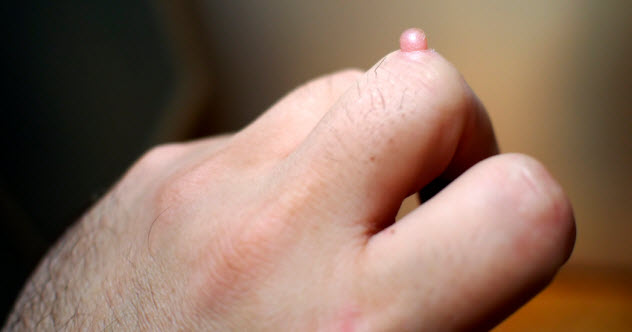
Warts had a wide range of cures. Often, Romans would burn cow dung, mouse dung, or the fat of a swan to rid themselves of warts. Pliny suggested taking a freshly podded pea and touching it to each nodule. Then he instructed his readers to wrap the peas securely in a cloth and throw them backward.
Rubbing the wart with sea foam or white sea sand was also supposed to work. If the person could afford it, gold was considered to be an effective remedy for warts.
However, if a Roman couldn’t get any of these cures, he could wait until after the 20th day of the month, lie faceup on a path, look at the Moon, grab whatever was nearby, and rub it on the wart.
8 Headaches

There were a number of cures for headaches, most of which involved animals in some way. For example, wine in which a chameleon had been soaked could be sprinkled on the sufferer’s head.
If that failed, an elephant’s trunk could be touched to the head. (It was considered much more effective if the elephant sneezed.) A Roman could also drink the water left behind by an ox or ass which had been drinking it.
A liniment made from burned cloth which had been stained with menstrual blood and mixed with the oil of roses was said to be an effective cure. As a last resort, the severed genitals of a fox could be fastened around the head to cure a stubborn headache.
7 Constipation
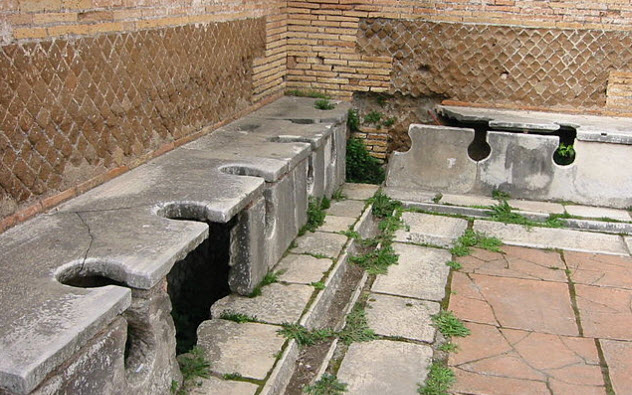
When the ancient Romans had trouble going to the bathroom, there were a number of cures from which to choose. For example, eating raw quinces preserved in honey could help.
Placing wolf’s gall (bile) on the navel with different kinds of milk, salt, and honey could also be effective at loosening the bowels. For those who didn’t like the idea of a wolf’s gall resting on their navel, a bull’s gall could be smashed up with wormwood and applied as a suppository.
Fresh beets that were ground into juice were also beneficial for constipation sufferers. Oddly enough, this remedy was also supposed to work for those afflicted with diarrhea. Almost every kind of fruit was said to be good as well. Finally, men like Cato the Elder prescribed cabbage as a great treatment for constipation and a multitude of other ailments.
6 Nausea
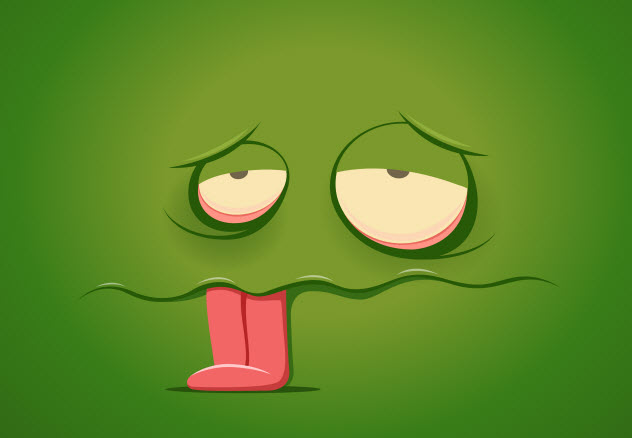
For those suffering from nausea—whether from natural causes or as a reaction to one of the Romans’ many “cures”—a three-finger pinch of cumin was said to work wonders.
Pennyroyal, a common herb in Europe, was also said to help if it was cooked in vinegar. Rose juice could be effective, although the Roman might fall into a deep sleep because it was also a cure for insomnia.
Oddly enough, the ancient Romans believed that drinking lots of wine was a cure for nausea. (They had a cure for the next day’s nasty hangover, too.) However, a Roman woman who was pregnant and feeling nauseous was supposed to eat a pomegranate or drink its juice.
As a last resort, human breast milk could be used to cure nausea. It was supposed to be especially effective if the woman had already weaned her child—and doubly so if she had given birth to a boy.
5 Flatulence

Flatulence was a common side effect of many Roman “cures” and could be treated through a variety of methods. Chicken broth was said to be an excellent purgative for the bowels. If it was made from an old rooster and strongly salted, it was even more effective. A hen’s white droppings were also beneficial for those suffering from uncontrollable flatulence.
When mixed with cobbler’s blacking, basil supposedly eased ferocious flatulence. However, if this cure was used too frequently, it could result in madness or put the patient into a coma.
Pliny also said that mixing cumin and asparagus was helpful, although this cure often caused other unspecified problems. As a last resort, ground beaver meat with vinegar and rose oil could be used as long as it was in liquid form. If eaten, it was for epilepsy.
4 Dysentery

Dysentery is caused by any number of bacteria, viruses, or parasites. It inflames the colon and results in diarrhea with blood for the sufferer. However, in ancient Rome, they didn’t know the cause of this disease, so the cures were quite far-fetched.
Chicken soup was considered to be a cure. Bitumen, a native asphalt of Asia Minor, was also supposed to work. Bitumen could also hasten menstruation for women.
The flesh of a spotted lizard was also an effective cure. But it had to be imported from a foreign country and boiled before it was eaten. The actual type of lizard was not recorded.
Egg yolks without the whites could be mixed with poppy juice and wine. The flowers of pomegranates, a wonder drug in ancient Rome, could be picked and eaten to cure dysentery. Also, vomited blood was supposed to work if it was mixed with wine and a vulture’s lungs.
3 Incontinence

Incontinence could be cured by taking the bladder of a hyena, soaking it in wine, and eating it. Roasted boar’s bladder was supposed to be quite effective as well.
If you could catch them, roasted seahorses were a common cure for incontinence. A smaller fish that was found inside a larger fish’s belly was also a good cure. If the sufferer was a child, Pliny suggested that they eat boiled mice with their food.
Maybe the oddest cure was taking papyrus or linen and touching it to the tip of one’s genitals. If that failed, tying a string of linen or papyrus around the genitals and then around the leg might do the trick.
Stranger still, incontinence could be cured by burning a pig’s penis, mixing it with wine, and drinking the concoction. Then, while the Roman was drunk from “swine wine,” he had to pee in the bed of a dog while saying the following in Latin: “This I do that I may not wet my bed as a dog does.”
2 Gout

Gout, a recurrent attack of acute inflammatory arthritis, could be cured in a number of ways. The combination of mustard, saffron, the fat of a male goat, and the dung of a female goat was supposed to be effective at alleviating the symptoms.
Rubbing a sea hare along the affected parts and wearing shoes made of beaver’s skin was also prescribed. The skin of what Pliny described as the “Pontic beaver” was supposed to be the most effective.
Pliny also believed that the touch of a menstruating woman could relieve the symptoms. Calf dung boiled with lily bulbs was believed to be a useful cure as well. One of the sadder cures was the use of a live fox that was tied to a stake and boiled in oil. It was supposed to make an effective drink to cure gout.
1 Epilepsy

Although epilepsy is still challenging to treat in modern times, the ancient Romans believed that they had a number of successful remedies. For example, an affected Roman could drink water that was taken from a spring during the night and then placed in the skull of a dead man.
The next step was to eat the flesh of a beast that had been killed with an iron weapon. The weapon must have killed a man previously. If all of that failed, putting an iron nail into the ground where someone had suffered a seizure was supposed to help.
The testes of a bear or wild boar dipped in mare’s milk or water was considered to be a highly effective treatment. The smell of the afterbirth of a female ass, especially if it had just borne a male, was beneficial to those who were about to have a seizure. However, this was neither a practical nor timely solution.
If nothing else worked, the affected Roman could take a dried camel’s brain, put it in vinegar, and eat it.




